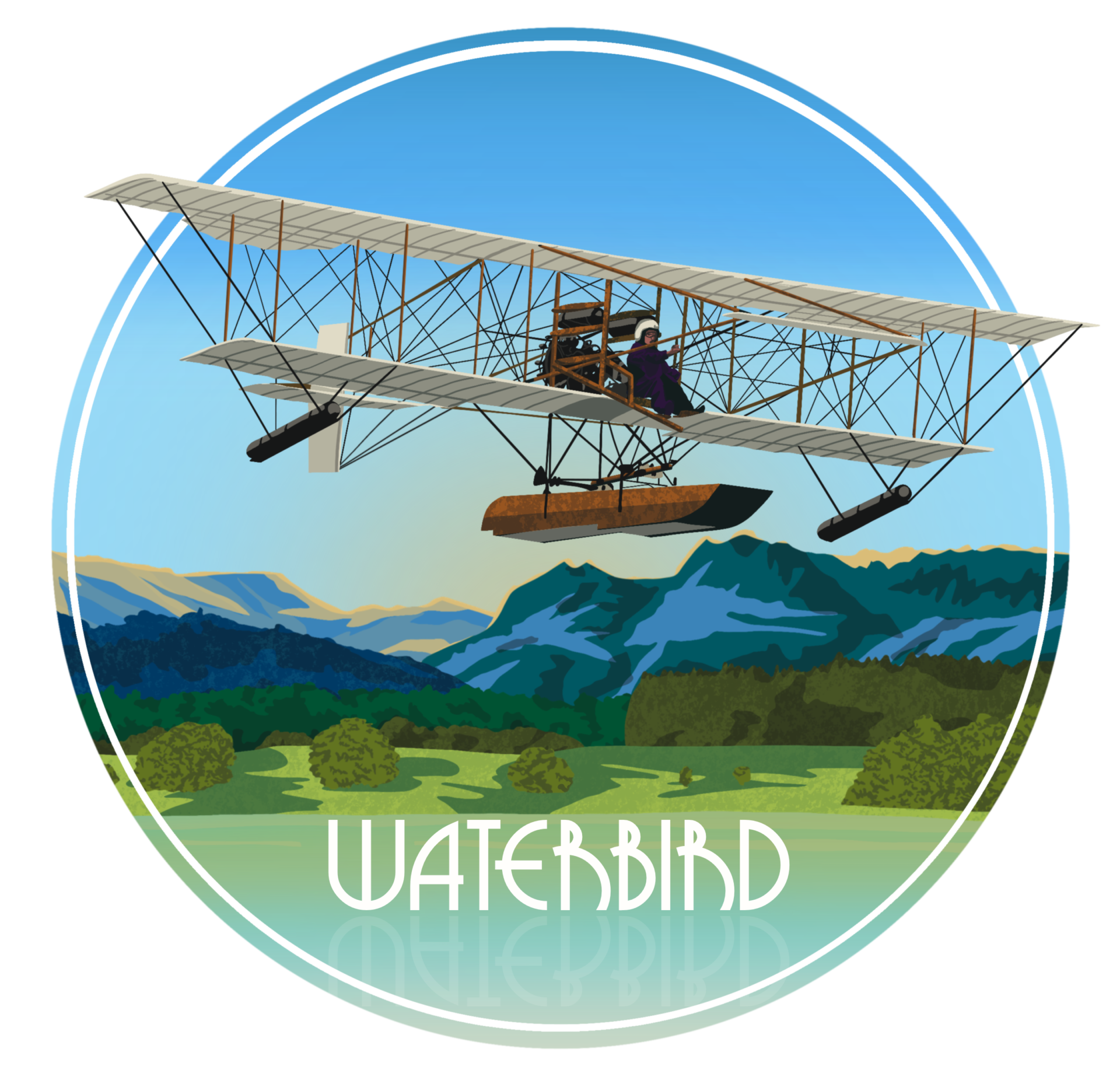The Somme
Associations with the First Battle of the Somme include the following:-
Captain Edward Wakefield, who commissioned
Waterbird, accepted Lord Lonsdale’s invitation to form ‘C’ Company of the Lonsdale Battalion, Border Regiment. He raised and gave basic instruction to 4 platoons from the Kendal and Windermere district. Tragically, the Battalion was decimated at the Somme.
This obituary of Sergeant Gilbert Hogg, a C Company member, was chosen to cite at this page because of the amount of personal information available (the Westmorland Gazette, Kendal Library and Cumbria’s Museum of Military Life) and also following a visit made to his grave at Authuille. Letters from his Commanding Officer and Sergeant Major gave the date killed as 26 June 1916, in contrast to the headstone which is inscribed 22 June. [The Cross of Sacrifice behind is present in all cemeteries of the Commonwealth War Graves Commission which comprise more than 40 graves.] A copyright issue was raised by his father against Wakefield over 2 photos which he took of Wakefield’s hydro-aeroplane
Waterhen which were published in
Flight magazine of 22 June 1912!
Captain Arthur Wakefield, Edward’s brother, was a surgeon throughout World War 1, including from the last days of 1915 to 12 October 1916 at the Somme, and was Mentioned in Despatches in 1917. He served in the Royal Army Medical Corps and was attached to the 29th Casualty Clearing Station at Gézaincourt.
As President of the Fell and Rock Climbing Club, on 8 June 1924 at Great Gable, he spoke at the dedication ceremony of a memorial tablet which he unveiled. The tablet is inscribed with the names of the 20 members of the Club killed in World War 1.
Lieutenant Donald Macaskie, from Laleham, Middlesex, began seaplane pilot training at Windermere in January 1915 at the age of 18 and obtained his Aviator’s Certificate there on 24 September. At the outbreak of war, Macaskie had joined the Royal Naval Air Service. He was commissioned as a 2nd Lieutenant in the Royal Flying Corps (‘RFC’) from 2 October 1915.
Macaskie was posted from Dover to France with 23 Squadron. At 6:00 pm on 20 July 1916, he commenced a mission to Bapaume, flying a Royal Aircraft Factory F.E.2b with Second Lieutenant Charles Sandys-Thomas as observer. 1 hour and 20 minutes into the flight, he was shot in the right leg and arm whilst his aeroplane was hit in both petrol tanks during a ‘Fight with Fokker’. He made a forced landing near Albert, but lost his right leg.
During
telephone conversations with Macaskie’s mother, RFC Headquarters described him as ‘Missing’ and the location as being over Pozières, behind German lines. She was told that there was a chance of them being prisoners, and was hopeful ‘as the machines now were so good that even when damaged can land well.
This
mosaic is of photos taken over Pozières on 20 July. – Australian War Memorial.
Reported as ‘Missing’, then ‘Prisoner of War’, he was interned at Château d’Oex but repatriated by the Red Cross via Bern, Switzerland.
Having returned home in September 1917, he was able to complete the log book entry which is shown at the top of this page.
– An item in The Westmorland Gazette of 15 July 1915, included The Lonsdales’ Ordeal. A Bowness Lad’s Story. ‘On Saturday morning at 7.30 the Lonsdales then advanced from the wood and as soon as they emerged they were met with a hurricane of machine-gun fire from three directions which mowed the lads down. The Colonel was the first to fall. We lost every officer, and we lost every sergeant in C company, except Sergt. Kissoek on the machine-gun section and Sergt. Shaw, Pioneer sergeant. I do not think that more than 15 Bowness lads escaped.’
